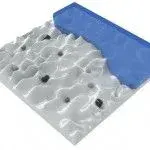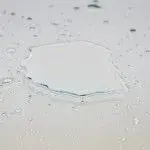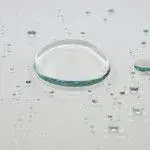TatDroid...upon re-reading through the thread it may have felt like we were trying to prove you wrong...and that's certainly not the intent. What we didn't want you (or any other members watching), to do though is make decisions due to, or be disgruntled about a situation for the wrong reasons. A scratch is a scratch, no matter how it's caused, no matter whether it's in a coating of some sort, or in the actual glass surface. None of that really matters to the end user. What does matter is how easily a scratch comes about, what can be done to prevent it, whether it leads to eventual breakage of the screen glass, and I suppose most importantly from a user's standpoint whether it is visible and detracts from the user experience or not.
We've hashed this out pretty well. The conclusion... Glass will scratch with the right parameters, no matter what anyone else tells you. Scratched glass is less visually appealing than glass that's pristine...but we all know that. Glass that's scratched can impede proper visibility of the screen. Scratches can become a real OCD problem...you keep rubbing your fingernail over it, looking at it, bumming out about it. Scratches detract from the value of the phone. And scratches can lead to early failure of the glass due to setting up stress in the glass surface...all it takes to create a full crack then is a bump in the right place, and it might not even require a bump, a simple flexing of the phone, an expansion of the battery, any number of things that will impart torque or pressure on the screen can take a scratch and turn it into a crack.
What can be done to protect... The answers are relatively simple. Install a good screen protector the moment you open the box, and BEFORE you've even touched the screen. If you do this, the screen will look as beautiful 2 years from now as it does straight out of the packaging. If the screen wasn't protected already, you can install a screen protector at some later date, and two things will happen; One, the existing scratches - if any will virtually disappear from sight. Two, the future of the screen will be much brighter as it will be protected from any future scratches.
What other things can you do to reduce the likelihood of scratches... WASH YOUR HANDS!! I can't stress this enough. It takes only a microscopic grain of abrasive material (what looks like dirt to you), stuck in one of your fingerprint lines to be rubbed on the screen as you are unlocking, swyping, selecting, etc. to create a very visible, but very superficial scratch that will bug the heck out of you from now until you replace the phone. DON'T use cases that you "slide" the phone into, if that case has ANY part which touches the screen while being inserted or removed, and no matter what that case is made of, man-made or natural (such as leather). Any dirt on (or impurities in), the material or plastic can scratch the screen. DON'T use a case that has a "screen shield", a plastic sheet that "rests" over the screen while the phone is in the case. Dirt and abrasives can (and will), get behind the shield and adhere to the plastic shield, and then will rub and mar, blemish, scratch the screen even while simply being carried in your pocket, purse or on your belt.
What you should NOT do... NEVER, I repeat NEVER use ANY type of POLISH, no matter how "mild" it may be marketed as being. ANY abrasives will detract from the screen's ability to withstand future scratching by actually removing a portion of the surface that's been treated to protect it from scratches. You MAY remove or diminish the appearance of existing scratches, but you will CERTAINLY be revisiting that process again and far sooner, and as time goes on you'll be chasing your tail.



